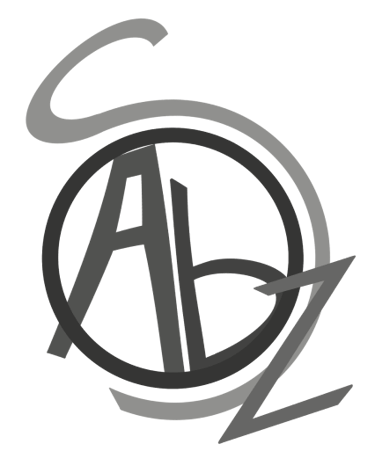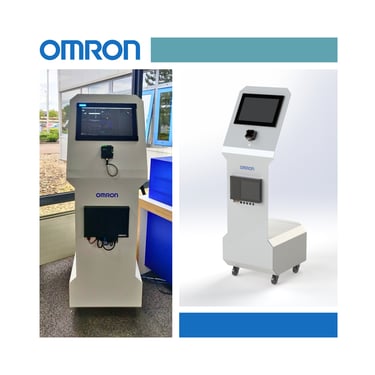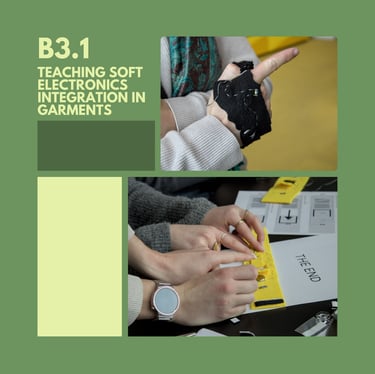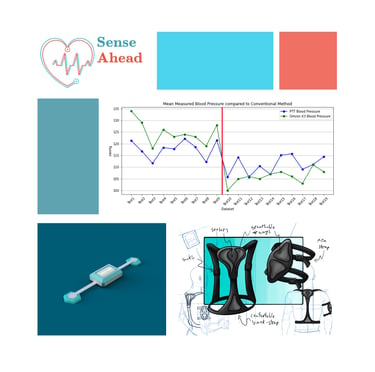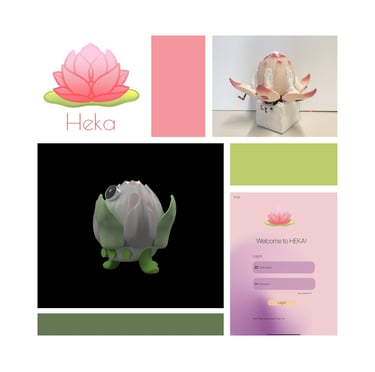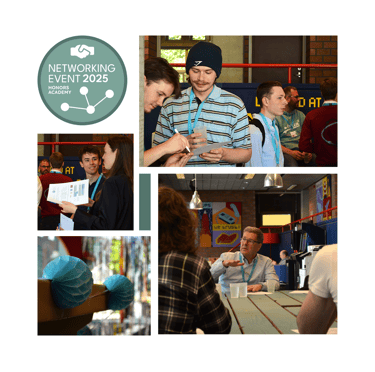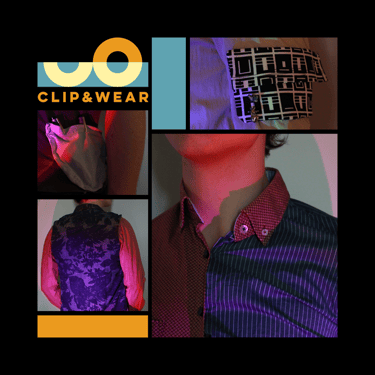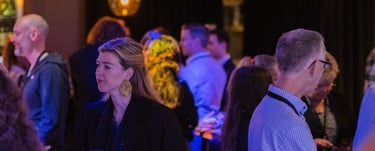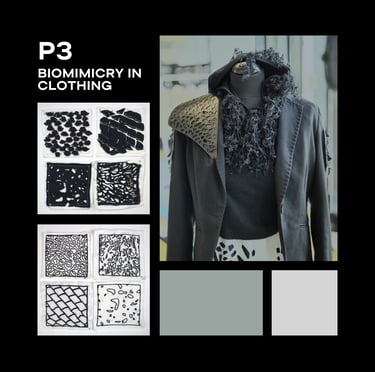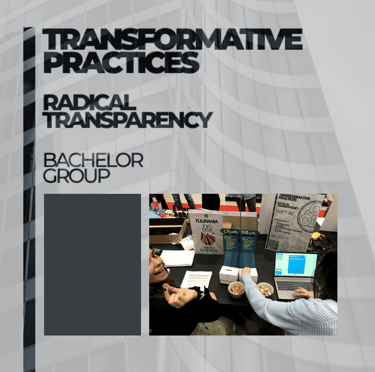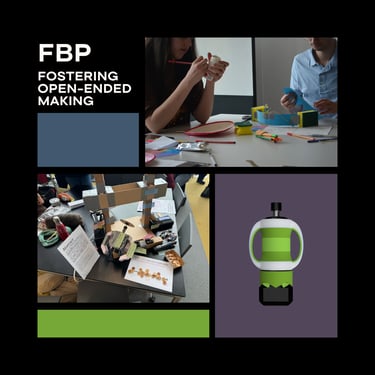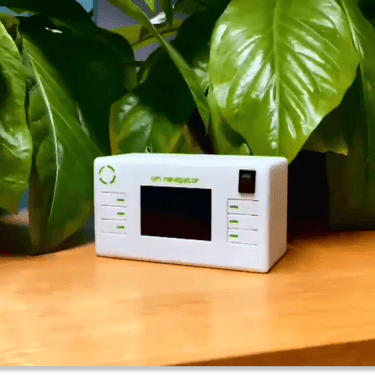
Technology & Realization
Technology & Realization is my strongest area of expertise, as most of my projects have centered on prototyping. From the start of university, I was often tasked with building prototypes due to my prior experience with various fabrication techniques.
Over time, I’ve realized that I approach these technical skills as tools to serve a purpose. I don’t get attached to any particular prototype or idea and am always willing to pivot when a better solution emerges. My entrepreneurial mindset pushes me to keep prototypes functional and focused, avoiding unnecessary features that don’t add value or feasibility. Throughout high school and university, I also learned to always work in a way that even if the project ends suddenly, I’d have something tangible to show for it.
In my maker exploration, I often follow the Probing and Expansive methods from Drifting by Intention [4]. I begin by exploring without fixed logic to broaden my perspective, then consolidate what I’ve learned into a spectrum of possibilities before committing to a specific direction.
Although I enjoy making, I’ve noticed it can sometimes limit my broader vision. As a designer, I shift between executing hands-on tasks and taking a top-down view searching for new connections and opportunities. I value this duality, as it defines clear boundaries for my capabilities and keeps me conscious of what I can truly achieve.
Implementation in projects
This Expertise Area has been present in most of my projects, though its prominence gradually decreased toward the end of my Bachelor’s. My most intensive application was during my internship at Omron Industrial Automation, where I received extensive guidance in mechanical and electrical engineering ranging from material science to electrical safety. I developed a high-fidelity prototype from scratch using ITEM profiles, plexiglass, 3D printing (for holders and fastening solutions), and gained hands-on experience working with sheet metal, fasteners, and material strength. I also supported the development of a new product by assisting in various tests (electrical, waterproofing, vibration, drop) and initiated a redesign of one of their product packages. Additionally, I became familiar with their Product Management System, which taught me the value of proper file organization and the benefits of a centralized database.
In the university context, I applied this expertise through hands-on work in multiple projects. I was the main contributor to the midterm, testing, and final prototypes in the HEKA project, created final prototypes in both Honors Years, and conducted various physical explorations in my B3.1 project, deepening my skills in vinyl cutting and material experimentation.

Business & Entrepreneurship
I strongly believe that even the most brilliant idea will fail without a solid business foundation or market demand to support it. That’s why I dedicated much of my bachelor's to developing my skills in business, management, and entrepreneurship through business sprints, events, an internship at a multinational, and courses from the Industrial Engineering department.
This focus has shaped a highly critical, often black-and-white mindset when evaluating whether an idea is truly feasible. While this decisiveness is useful in high-pressure situations, it can be limiting when considering long-term possibilities. To counterbalance this, I consciously reflect on my judgments and question whether they were made too hastily.
My approach is inspired by Disciplined Entrepreneurship, [5] The Lean Startup [6], and the Post-Growth Entrepreneurship [7] mindset. Alongside these frameworks, launching my own startup has deepened my understanding of how businesses are built and how others build theirs.
Looking back, I see that this focus has given me a valuable perspective on every new project. It has also added an essential filter: to always seek impact and to identify the right market fit for each idea. Ultimately, I view entrepreneurship not just as a skill, but as a mindset, one that empowers fast, impact-driven decisions and fuels innovation.
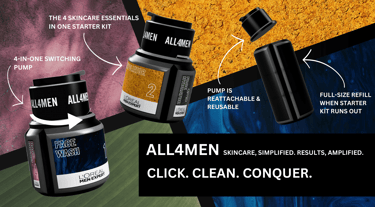

2
Implementation in projects
Business is important and thankfully, I recognized that early on. To better understand the industry, I made it a goal in my first and second years to attend as many company visits and sprints as possible through Soapbox, aiming to gain a wide range of perspectives. I also participated in several workshops from The Gate, which deepened my knowledge in areas like patenting, financial management, and identifying the right opportunities for starting a company.
These insights were reinforced in a different way when I had to organize a networking event myself. That experience gave me a firsthand look at the challenges of cold-calling and significantly strengthened my solution-oriented mindset.

User & Society
To me, the most important part of design is understanding what users truly need and not just what they say they want and recognizing their role within a broader societal context. I still consider myself developing in this area, as I’ve noticed a tendency to overlook bias in how I frame questions or set up research. However, I always reflect on these shortcomings in my reports, believing that acknowledging mistakes is key to personal growth and deeper empathy.
Validation is one of the most challenging yet rewarding parts of the design process. It consistently reveals new directions and pulls me out of my own assumptions, which is why I base my design decisions on the insights it provides. As a strong advocate of user-centered design and the Reflective Transformative Design Process, [8] I use this expertise to stay grounded and genuinely connect with the people I design for.
I look for empathy, subtleties, and hidden details during validation, knowing that the real answers often lie between the lines.
As I move further toward designing for behavioral change, I find myself increasingly drawn to exploring the nuances of human emotion, habits, and rituals seeking a deeper understanding of people at the core of every design.
3
Implementation in projects
The user is the most important player in the field, so if they’re not satisfied, what value does our design really have? I first realized this during my second Industrial Design project, when I insisted on visiting the municipality to get a firsthand perspective through an interview with someone working on government transparency. That experience helped me grasp the importance of understanding the user.
In my third project, we not only gathered user input but fully integrated it into our final deliverable. Since then, the user has remained central to my design process, both in my B3.1 and Final Bachelor Project. In these cases, I conducted multiple expert interviews, user tests, and design probes to ensure the design aligned with real needs.

Creativity & Aesthetics
The way we design and how we interact with what we create is fundamental to any project. That’s why, as a designer, I believe it’s essential to stay conscious of both the creative process and the meaning behind aesthetic choices.
Whether I’m designing a product, service, or mindset, I consistently work to abstract interactions using the Interaction Frogger Framework [9], consider device agency, and research how users interpret visual elements. In every project, initially in more abstract ways, now with growing intention, I aim to balance the client’s vision with my own values, embedding them into both the form and function of the design.
Looking back, I wish I had established a cohesive visual identity earlier. My past work varies significantly in look and feel, often reflecting different values. For example, in my first Industrial Design project, I pushed a simplicity-focused aesthetic onto the product’s appearance and behavior. Today, that simplicity runs deeper embedded in intuition and the overall design logic.
Moving forward, I plan to solidify a clear visual identity across my work, refining it gradually rather than reinventing it each time.
4
Implementation in projects
Aesthetics always came second to functionality in my earlier work, but it became increasingly clear that it takes center stage when designing clothing. Through various user interviews and explorations focused on both garment aesthetics and more robust products, I’ve been able to refine my visual identity and ensure coherence and branding in my projects.
At Omron, I learned to incorporate company styling elements into both existing and new products. In my third project, I had the opportunity to investigate aesthetics more directly, while in my Clip&Wear journey, I explored an entirely new visual language. Together, these experiences have shaped a preferred visual brand that now guides my recent and ongoing projects.

Math, Data & Computing
After my first year, this area of expertise gradually faded into the background, only resurfacing when coding or basic math and data analysis were required. Recognizing early on that I wouldn’t focus heavily on it, I chose to maintain and apply my skills through a two-year self-initiated project in the Honors Academy. This allowed me to build on what I learned in high school and my first year overseeing prototyping, coding, and the necessary data analysis outputs.
I’ve never been a natural in this area; I often looked for shortcuts to get tasks done more easily. Yet, through several close calls and high-pressure situations, I developed a pragmatic mindset: one focused on delivering reliable, minimal, functional solutions. This approach has made me a valuable team member when quick execution in coding or analysis was needed.
In the end, I admit this is my least favorite and least developed domain. While the world increasingly moves in this direction, I’ve accepted that I engage with it out of necessity and not passion.
5
Implementation in projects
While mathematics often remained in the background, it consistently emerged in my projects through critical and methodical thinking. In HEKA, I was primarily responsible for writing the code, developing a simple yet effective communication method between Arduinos that even surprised my assessors with its ingenuity.
From cleaning and analyzing data during my Honors Project to helping code and wireframe a Bin Navigator for waste separation, mathematics and logic played key roles. I also applied it in the creation of the high-fidelity Omron prototype while calculating the strength and dimensions of the Plexiglass plates, and while assisting with coding the visitor platform using Linux, a previously unfamiliar OS. Looking back, I can confidently say this expertise area has improved significantly since my first year.

Design & Research Process
When I started university, I believed that contributing meant always solving problems directly. Over time, I learned that meaningful design goes beyond simply addressing client requests, it involves uncovering the root causes behind problems and tackling those instead. True impact comes from challenging assumptions and digging deeper than the surface-level brief.
However, identifying the root cause isn’t enough. To create convincing solutions, you need to support your perspective with solid evidence. That requires structured research, not just reading, but methodically collecting and organizing insights from the right people and literature. A well-founded argument is essential not only for building a credible design but also for gaining support and making your ideas resonate in the real world.
6
[4] Gall Krogh, P., & Koskinen, I. (2021). Drifting by Intention – Four Epistemic traditions in Constructive Design Research. Extended Abstracts of the 2021 CHI Conference on Human Factors in Computing Systems. https://doi.org/10.1145/3411763.3445000
[5] Disciplined Entrepreneurship: 24 Steps to a Successful Startup. (2024, May 23). Disciplined Entrepreneurship. https://www.d-eship.com/
[6] The Lean Startup | Methodology. (n.d.). https://theleanstartup.com/principles
[7] Business is one of the most effective forms of activism. Business is one of the most expressive forms of art. (n.d.). https://nonprofit.ventures/
[8] Ccm Caroline Hummels, & Frens, J. (2011). Designing Disruptive Innovative Systems, Products and Services: RTD Process. InTech EBooks. https://doi.org/10.5772/22580
[9] Interaction frogger: A design framework to couple action and function through feedback and feedforward. (n.d.). ResearchGate. https://www.researchgate.net/publication/221441504_Interaction_frogger_A_design_framework_to_couple_action_and_function_through_feedback_and_feedforward
All background photos are sourced from the Hostinger image library. Everything else is from me.
AI Statement: ChatGPT 4o was used as a tool to reformulate and improve the conciseness of the written content. No AI image generation was done nor was it used for any other purpose during the making of this portfolio.
